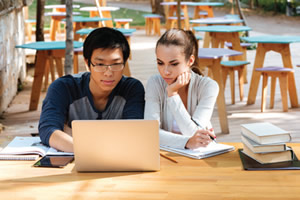Technology to Move Outside in 2017

PHOTO © DEAN DROBOT
I predict that 2017 will see technology
accessibility moving and becoming
more available outside on campuses
in all regions of the country. This
prediction is based on the trend in
recent years to expand the classroom
learning experience beyond four
walls, as architects implement such
design elements as wider hallways to
create informal gathering and social
spaces. The next obvious step is to
encourage and promote outdoor
learning.
For example, Kalamazoo, MIbased
Landscape Forms offers a family
of mobile device charging stations
that enable students to plug in and
recharge outdoors. The company has
three models: a power pedestal, a
charging station with accent light and
a charging station with area light. All
provide access to power in various
configurations of GFCI and/or USB
outlets.
Similarly, Suffolk, VA-based Fibrex
Group offers a “smart bench,” which
harnesses solar energy to provide
USB and wireless cell phone charging,
WiFi Internet and area lighting,
as well as sensor and data gathering.
It even has a built-in cooling fan system
to keep the seating area below
80°F on hot days.
Enabling technology accessibility
outdoors expands both the casual
(students gathering to review notes
after class, socialize and connect)
and formal (think science, literature,
agriculture, psychology and more)
learning environment. It provides a
sense of fullness and wellness to the
campus learning experience, as well
as meets the needs of students desiring
to learn outside of the traditional
classroom.